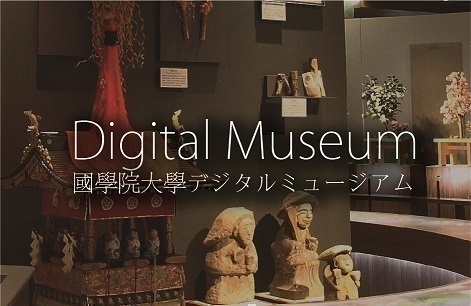- トップ
- Encyclopedia of Shinto
- Motoori Norinaga
Encyclopedia of Shinto
| Main Menu: | |
| Links: |
詳細表示 (Complete Article)
| カテゴリー1: | 8. Schools, Groups, and Personalities |
|---|---|
| カテゴリー2: | Personalities |
| Title | Motoori Norinaga |
| Text | (173-181) Scholar of National Learning (kokugaku) of the late Edo period. His original lineage name was Ozu, and he was known initially by the names Yoshisada and Yashirō. After he took the family name Motoori, he was known as Norinaga, Shun'an and Chūe. His epistolary name was Suzunoya. Born in 1730 in the town of Matsusaka, Ise Province (present-day Matsusaka City, Mie Prefecture), his parents were Ozu Sadatoshi and Okatsu, proprietors of a cotton wholesaling business. According to family tradition, Norinaga was born after his parents prayed for a child at the shrine Mikumari Jinja (aka Mikomori Jinja, i.e., a shrine granting childbirth). When Norinaga was eleven his father Sadatoshi died and the family business was inherited by Norinaga's elder brother-in-law. The brother-in-law, however, died when Norinaga was twenty-two, at which point the family estate was transferred to Norinaga. In the interim between the deaths of his father and brother-in-law, he was briefly adopted into the Imaida family in the town of Yamada, but he had loved reading and composing poetry since childhood and showed no inclination for commerce, with the result that his adoption was annulled, and he returned to his birth family. Norinaga's mother ultimately determined to close the family business, and deciding to make the most of Norinaga's strengths, in 1752 she returned their names to the original lineage name of Motoori and sent Norinaga to Kyoto to study medicine. In Kyoto, Motoori studied Chinese classics with Hori Keizan of the Ogyū Sorai school, and medicine with Hori Genkō and Takekawa Kōjun. While attending readings of court poetry (waka), he also encountered the work of the monk and scholar Keichū through reading texts in Hori Keizan's library. Over the course of five years of study in Kyoto, Motoori affirmed his motivation to pursue research on ancient texts. Upon his return to Matsusaka, Motoori opened a pediatric practice while assuming a leading position as mentor of local poetry circles. Through his studies on poetics and a series of lectures beginning from 1758 on The Tale of Genji (Genji monogatari), he established his unique position that attempted to seek the core of literature in the "mind that knows the pathos of things (mono no aware o shiru kokoro)." In 1763, Motoori conferred with Kamo no Mabuchi, who had stopped in Matsusaka while on a journey. Following Kamo's encouragement, research on the ancient text Kojiki thereafter formed the core of Motoor's scholarship. Motoori officially became Mabuchi's disciple the year following his visit, and he began to receive Mabuchi's instruction on the Man'yōshū through written correspondence. While writing his seminal work Kojikiden (Exegesis of the Kojiki), Norinaga also made seminal advances in the field of linguistics, including research on conjugations and the pronunciation of Chinese characters (kanji). Further, in conjunction with the literary discourse of the time, he argued that a proper understanding of Shinto must involve a rejection of foreign modes of thought in favor of a foundation on the study of the kami (shingaku, or "theology"), in this way making him a great systematizer of kokugaku, far in advance of his contemporaries in both quantity and quality. Motoori set the stage for the modern development of the study of Japanese national language and literature, and in so doing produced findings that even now are impossible to ignore. However, in the background of this scholarship was his profound faith in Shinto and the origins of the Japanese language. As the Kojikiden was published, Motoori gained disciples from all over the nation. His academy, the Suzunoya, achieved a state of great influence and power, and Norinaga traveled to lecture in various regions. He was employed as a special lecturer by the Tokugawa clan of Kii Province in 1792, traveling to Wakayama numerous times to present lectures on ancient literature, likewise traveling to Kyoto in 1801 to give lectures on poetry to an assembly of courtiers. Motoori died in the ninth month of 1801 at the age of seventy-two. In keeping with his written will, he was given the posthumous Buddhist name Kōgakuin Sekijōdōkei Koji, and was given the posthumous title of Akitsu Hikomizusakurane no ushi. He was interred on Mount Yamamuro, on the outskirts of Matsusaka. In addition to the Kojikiden, Motoori was the author of such works as Ashiwake obune, Isonokami no sasamegoto, Shibun yōryō, Genji monogatari tama no ogushi, Kokinshū tōkagami, Ōharae kotoba goshaku, Izumo no kuni no miyatsuko kan'yogoto goshaku, Jindaigi uzu no yamakage, Shokkireki chōshōshikai, Naobi no mitama, Gyojū gaigen, Hihon tama kushige, Kuzubana, Uhiyamabumi, Tamakatsuma, Shinkokinshū mino no iezuto, Te ni wo ha himokagami, Kotoba no tama no o, Kanji san'onkō and Ise nigū sakitake no ben. Motoori's original manuscripts and personal library of texts (classified as an Important Cultural Property by the Japanese government) are now stored at the Matsusaka Municipal Museum of Motoori Norinaga (Norinaga Kinenkan). Additionally, all of Norinaga's works and many other related resources have been gathered, carefully selected, edited with commentary, and published in Motoori Norinaga zenshū (Complete Works of Motoori Norinaga), from Chikuma Shobō. - Mori Mizue |




